‘Caesar: The ides of March are come.
‘Soothsayer: Ay, Caesar; but not gone.’
– Shakespeare, Julius Caesar
Caesar was one of the leading mass murderers of his time. And one of its greatest generals.
He took an army into Gaul (present-day France, Belgium, Luxembourg, and parts of the Netherlands, Switzerland, and Germany). At the time, there were some 3 million people in the area. He killed a million of them. Another million died of starvation and disease. A million were left.
Gaul was probably the Iraq or Afghanistan of the day. It ‘harboured terrorists,’ said senators in Rome. Besides, some of its Celtic tribes had invaded Rome itself 400 years earlier.
The Gauls (dozens of Celtic tribes) fought bravely against Caesar’s legions. But they were no match for the well-organised, well-trained, ruthless Romans.
‘Veni, vidi, vici,’ wrote Caesar.
But while he could subdue millions of barbarians, he couldn’t stop his own senate companions from stabbing him to death on the 15th of March, 44 BC.
What goes around, comes around.
When the drought comes
When we left you yesterday, we were dissecting America’s ‘capitalistic’ economic system. We promised to continue today. But with so many disgusting body parts already on the floor, we are getting a little nauseated.
So, we switch to a lighter subject, a brief report from the ranch.
We rode over the pass, yesterday. We needed to see how much work would be required to fix it. The trail leads from our valley up through the mountains to the larger valley to the east.
Our side is high and dry, with little grass. On the other, the river flows year-round, allowing us to irrigate alfalfa crops and stock up round bales of hay.
The trouble is, the cattle have to get from one side to the other. A road was built in the 1950s. It has not been used in many years and has fallen into disrepair; in some places, there is no trace of it left.
In desperation, we drove our cattle over the pass two years ago. A drought left the poor animals on the verge of starvation; we had no choice.
But it was a rough passage. Several cows died. More were left crippled by the rough path.
Now, we move the calves by truck. But when the next drought comes, we may be forced to use the pass again. So, we wanted to see what would have to be done to it.
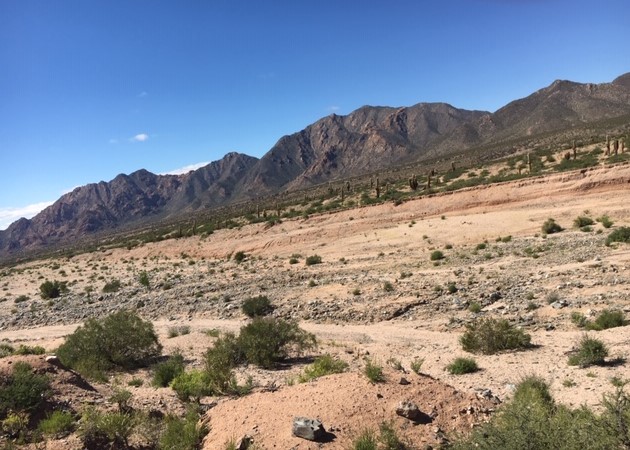 |
The dry riverbed at Gualfin |
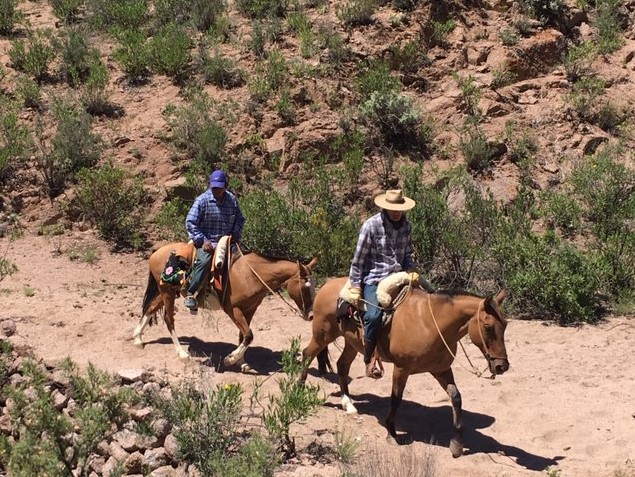 |
Bill and company moseying along |
We left the lower farm a little after dawn, mounted on our familiar horses and comfortable saddles. We knew it would be a long day.
Hours passed, as we gradually made our way up a dry riverbed. It was hard going for the horses, as the sand gave way beneath them. But they kept going, and the sand changed to rugged rocks. The horses picked their way among them, often stumbling, but never falling.
Then, as we headed up to the pass itself, we noticed a house in the distance…
Ramshackle place
This was our land. We had heard that there were people living up here. But we doubted it. It was too barren, too bleak, and too dry.
We rode over to the house to have a look.
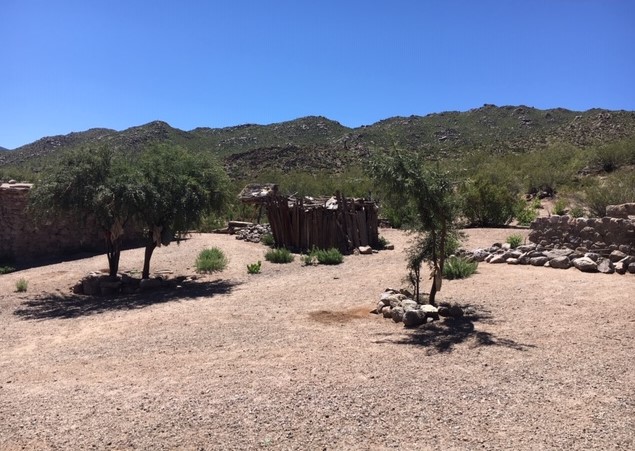 |
Bill discovers a strange house at Gualfin |
At first, it appeared that no one was there. Dogs barked. But no one came out. It was a house typical of the area — built of mud, with a mud roof. There were also some mud outbuildings and several small corrals made of broken pieces of wood, roots, and sage.
It was ramshackle…with bits and pieces of trash strewn about.
‘Hola…Buen día…’ we yelled.
Nothing.
Then, we noticed a figure behind a fence. It was an old woman. She peeked around the corner. She couldn’t get many visitors and must have been cautious about welcoming strangers.
We explained that we owned the land and were just getting to know it better. Then we asked questions. Who was she? What was she doing there? How did she survive there? (The place has no drinkable water…)
The local people, up in the mountains, speak Spanish. But it is not the same language that you hear in Madrid or Buenos Aires. It sounds more like an Indian tongue, with quick, barked-out messages. Gradually, we pieced together her story…
‘I was born over at the ranch [our place]. I came over here when I was about 16, with a man. I had six children. He left. They left. I’m still here.’
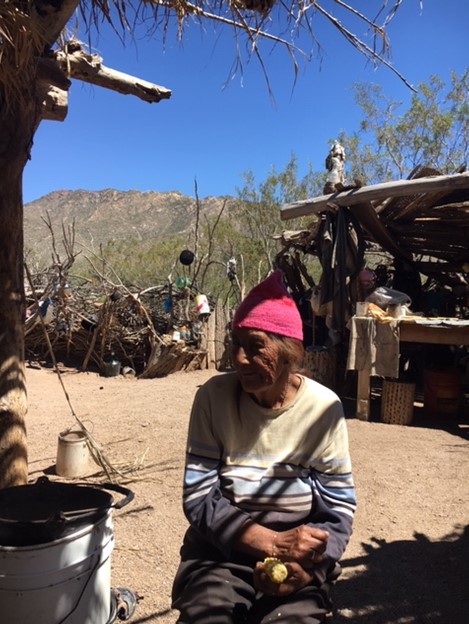 |
Faustina |
Faustina is about 70. She has relatives all up and down the valley. But she lives alone in one of the most godforsaken desert outposts we have ever seen.
It almost never rains. So she relies on a small spring to water her goats. She eats almost no vegetables…or fruits. Only goat meat, goat cheese, and whatever occasional bread or potatoes her relatives bring her from town.
They also bring her water. The water in the spring is too salty for human consumption.
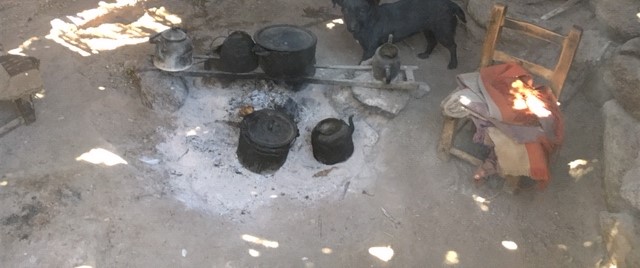 |
Faustina’s ‘kitchen’ |
Why does she stay there? Why doesn’t she move in with a relative in town?
Conversation was almost impossible. So, we stopped asking questions and left her a bag of apples, some corn, and some crackers we carried in our saddle bags.
Treacherous ride
The rest of the ride was more treacherous. At one point, the road was nothing more than a narrow ledge on a steep mountainside. A slip would have been fatal. But these criollo horses don’t slip. Or else, those that do are gone, along with their riders.
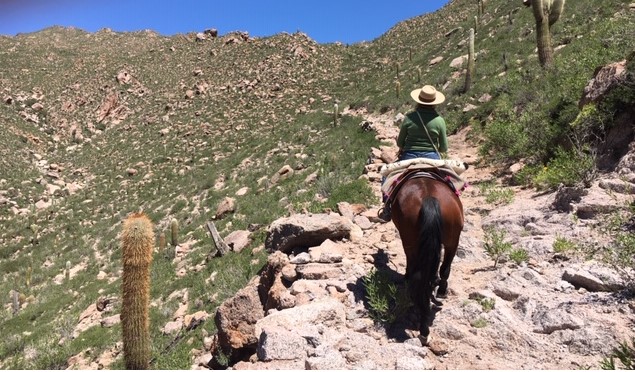 |
The riders (carefully) navigate the rocky pass |
Finally, after about five hours, we reached the crest. There, in front of us and below us, was the ranch. We’d never seen it from that perspective; it was vast and still green from the late summer rains.
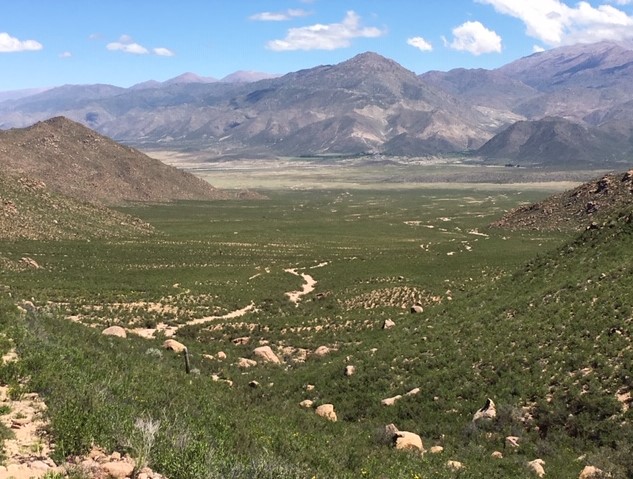 |
A new perspective of Gualfin |
It took another 3 hours to come down from the pass and cross the prairie to the house. And when we arrived, we were so tired, stiff, and sore, we could barely dismount.
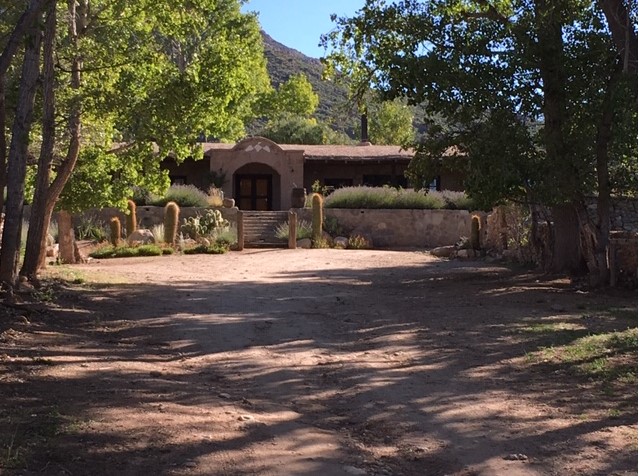 |
Home, at last… |
But we have found out what we needed to know. Fixing the road could not be done with our backhoe. It would be too dangerous. The road was too far gone. It would have to be done as it was built in the first place — by teams of men with picks and shovels.
We reported this to the ranch foreman.
‘You’re going to have to send about four guys up there…with picks and shovels…and they’re going to have to go at it hard for about three weeks.’
‘Yes, that would have been possible in the old days. But I don’t know if I can find four guys willing to do it today. It’s too hard. And too far away. When it was built, the guys stayed up there for weeks, sleeping out in the open and eating whatever they had brought with them. But those men are long gone. And the young men today are used to getting welfare payments, riding on motorcycles, and watching TV.’
The young recruits are not the same as the old veterans.
Regards,
Bill Bonner





Since founding Agora Inc. in 1979, Bill Bonner has found success and garnered camaraderie in numerous communities and industries. A man of many talents, his entrepreneurial savvy, unique writings, philanthropic undertakings, and preservationist activities have all been recognized and awarded by some of America’s most respected authorities. Along with Addison Wiggin, his friend and colleague, Bill has written two New York Times best-selling books, Financial Reckoning Day and Empire of Debt. Both works have been critically acclaimed internationally. With political journalist Lila Rajiva, he wrote his third New York Times best-selling book, Mobs, Messiahs and Markets, which offers concrete advice on how to avoid the public spectacle of modern finance.